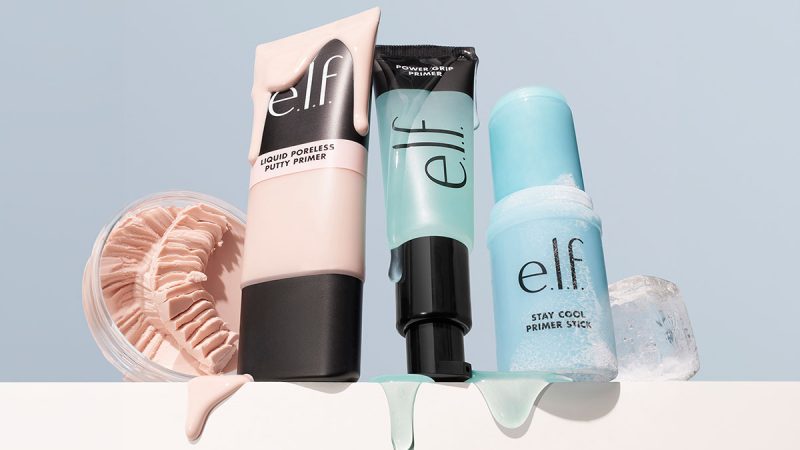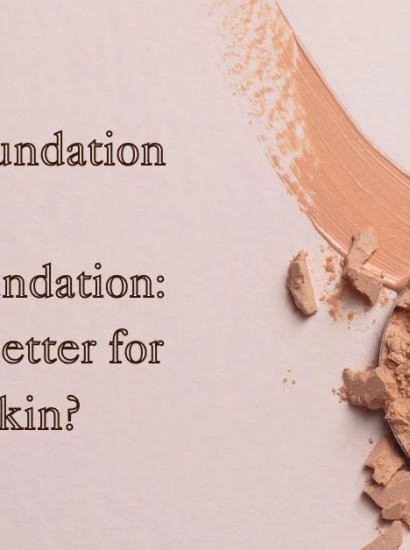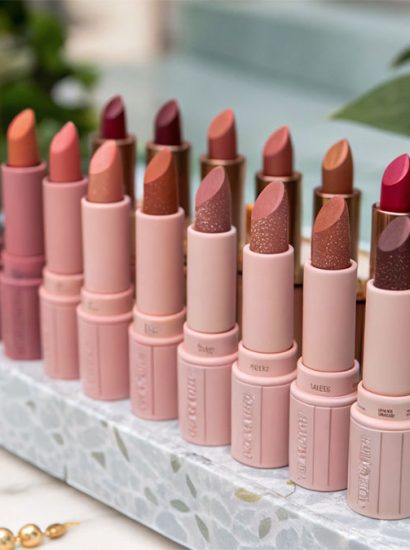Achieving perfect skin isn’t just about having a good skincare routine; it also involves using the right makeup products, especially primers. Primers are the unsung heroes of the makeup world, providing a smooth canvas for your foundation and helping your makeup last longer. This comprehensive guide will cover everything you need to know about primer, including their benefits, types, and how to choose the best one for your skin type.
What are Primers?
A primer is a makeup product applied after skincare and before foundation. It creates a smooth base, helping to even out skin texture, minimise the appearance of pores, and extend the longevity of your makeup. Think of it as a bridge between skincare and makeup, ensuring a flawless finish.
2. Benefits of Using Primers
Smoother Skin Texture
Primers fill in fine lines, wrinkles, and pores, providing a smooth surface for foundation application. This results in a more even and polished look.
Longer-Lasting Makeup
One of the primary benefits of using a primer is that it helps your makeup stay put. By creating a barrier between your skin and makeup, primers prevent oils and sweat from breaking down your foundation.
Enhanced Makeup Performance
Primers can enhance the performance of other makeup products. They ensure that foundation glides on smoothly and blends seamlessly, reducing the likelihood of caking or patchiness.
Targeted Skin Concerns
Many primers are formulated to address specific skin concerns. Whether you need hydration, oil control, or colour correction, there’s a primer designed to meet your needs.
Types of Primers
Hydrating Primer
Ideal for dry or dehydrated skin, hydrating primer contain moisturising ingredients like hyaluronic acid and glycerin. They provide an extra layer of hydration, ensuring that your makeup doesn’t cling to dry patches.
Mattifying Primer
If you have oily skin, a mattifying primer can help control shine and keep your makeup looking fresh. These primer often contain ingredients like silica or clay to absorb excess oil.
Colour-Correcting Primer
Colour-correcting primer come in various shades to address different skin concerns. For example, green primer neutralize redness, purple primer brighten dull skin, and peach or orange primer correct dark spots and under-eye circles.
Illuminating Primer
For a radiant, dewy finish, opt for an illuminating primer. These primers contain light-reflecting particles that give your skin a healthy glow.
Pore-Minimising Primer
Pore-minimising primers are designed to blur the appearance of large pores, giving your skin a smooth and airbrushed look. They typically contain silicone-based ingredients for a silky finish.
How to Choose the Right Primer for Your Skin Type
Dry Skin
For dry skin, choose a hydrating primer with moisturising ingredients. Look for products that offer a dewy finish to enhance your skin’s natural glow.
Oily Skin
If you have oily skin, a mattifying primer is your best bet. These primer will help control oil production and keep your makeup looking fresh throughout the day.
Combination Skin
For combination skin, consider using different primer on different areas of your face. A mattifying primer on the T-zone and a hydrating primer on the cheeks can balance your skin’s needs.
Sensitive Skin
Sensitive skin requires a gentle, fragrance-free primer. Look for products with soothing ingredients like aloe vera and chamomile to calm any irritation.
Mature Skin
For mature skin, choose a primer with anti-aging benefits. Ingredients like peptides and antioxidants can help smooth fine lines and improve skin texture.
How to Apply Primer
Step 1: Cleanse and Moisturize
Start with a clean, moisturised face. Proper skincare ensures that your primer and makeup will apply smoothly.
Step 2: Apply Primer
Using clean fingers or a makeup sponge, apply a small amount of primer to your face. Focus on areas where you have larger pores or fine lines. Blend the primer evenly across your skin.
Step 3: Let It Set
Allow the primer to set for a minute or two before applying foundation. This gives the primer time to form a smooth base.
Step 4: Apply Foundation
Follow up with your foundation and other makeup products as usual. You’ll notice that your makeup applies more smoothly and lasts longer.
Common Mistakes to Avoid
Using Too Much Product
A little goes a long way with primers. Using too much can cause your makeup to look cakey or slide off your face.
Not Letting Primer Set
Always let your primer set for a few minutes before applying foundation. This ensures that it forms a proper base for your makeup.
Skipping Primer
Skipping primer might save you time, but you’ll miss out on its benefits. Always use a primer to enhance your makeup’s longevity and performance.
Top Primer to Try in 2024
Smashbox Photo Finish Foundation Primer
A cult favourite, this primer blurs imperfections and extends the wear of your makeup. Its lightweight, silicone-based formula suits all skin types.
Fenty Beauty Pro Filter Instant Retouch Primer
This primer provides a soft matte finish, making it perfect for oily and combination skin. It also minimises the appearance of pores.
Laura Mercier Pure Canvas Hydrating Primer
Ideal for dry skin, this primer contains hydrating ingredients that keep your skin moisturised throughout the day. It’s also free of silicone, making it suitable for sensitive skin.
Milk Makeup Hydro Grip Primer
This gripping primer ensures that your makeup stays in place all day. Its hydrating formula is infused with hemp-derived cannabis seed extract and blue agave extract.
Benefit Cosmetics The POREfessional Face Primer
Known for its pore-minimising properties, this primer provides a smooth, velvety finish. It’s perfect for those with visible pores or textured skin.
DIY Primers: Can You Make Your Own?
Aloe Vera and Moisturizer
Mixing a small amount of aloe vera gel with your regular moisturiser can create a hydrating and soothing primer.
Glycerin and Water
A mixture of glycerin and water can act as a makeup adhesive, helping your foundation stick better and last longer.
Sunscreen and Moisturizer
Combining sunscreen with moisturiser not only protects your skin but also provides a smooth base for makeup application.
Primers for Different Seasons
Summer
In summer, opt for a mattifying primer to control excess oil and sweat. Lightweight, oil-free formulas work best.
Winter
During winter, a hydrating primer can combat dry, flaky skin. Look for primers with nourishing ingredients like hyaluronic acid.
Spring
Spring calls for a balance between hydration and oil control. A lightweight, gel-based primer can provide the right amount of moisture without being too heavy.
Fall
In fall, use a primer that offers a bit of hydration and helps maintain your skin’s barrier. Primer with antioxidants can also protect your skin from environmental stressors.
Expert Tips for Using Primer
Mix with Foundation
Mixing a small amount of primer with your foundation can create a lighter, more natural finish.
Use as a Touch-Up
Throughout the day, apply a tiny amount of primer to areas where your makeup has faded or become oily. This can refresh your look without needing to reapply makeup.
Layering Primer
Don’t be afraid to layer different primer to address various skin concerns. For example, use a mattifying primer on your T-zone and a hydrating primer on your cheeks.
Conclusion
Primers are a crucial step in achieving perfect skin and flawless makeup application. By understanding the different types of primer and how to use them, you can significantly enhance your makeup routine. Whether you need hydration, oil control, or colour correction, there’s a primer out there for you. Experiment with different products and find the one that best suits your skin type and concerns.
FAQs
1. Do I need to use a primer every day?
It’s not necessary to use a primer every day, but it can enhance the longevity and appearance of your makeup, especially for special occasions or long days.
2. Can I use primer without foundation?
Yes, primers can be used alone to blur imperfections and give your skin a smoother appearance.
3. How much primer should I use?
A pea-sized amount is usually sufficient for your entire face. Using too much can cause your makeup to look cakey.
4. Can I apply primer with my fingers?
Yes, applying primer with clean fingers is effective and helps to evenly distribute the product.
5. Are there primer for specific skin concerns?
Absolutely. There are primer designed to address various skin concerns, such as hydration, oil control, pore minimization, and colour correction.





